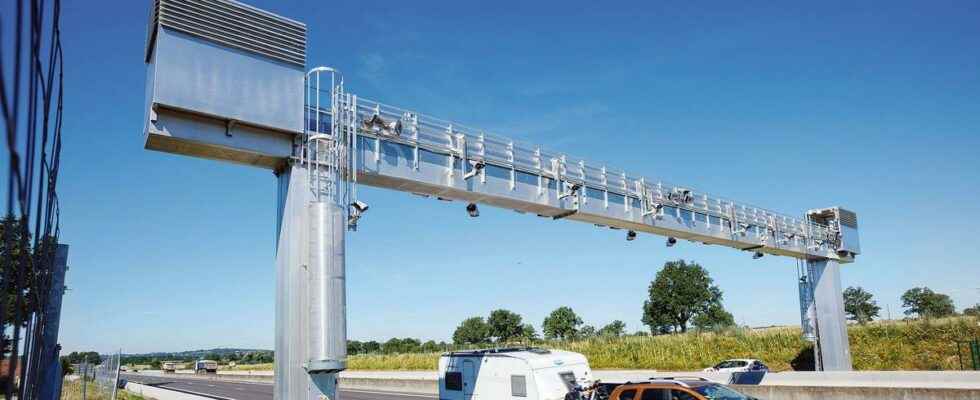APRR operates from this Friday the A79, a four-lane where motorists do not need to slow down to pay the toll.
Forgotten the old national 79, nicknamed the “road of death” because of its dangerousness. After two years of work, APRR, which is a subsidiary of Eiffage, transformed it into a motorway. From this Friday, it is therefore on the A79 that motorists will travel the 80 km between Montmarault (Allier) and Digoin (Saône-et-Loire). One more simple four-lane in France? Not quite. The A79 is above all the first “free flow” motorway in France.
With this system, the barriers where you have to slow down, or even stop, to pay the toll have disappeared. Instead, gantries equipped with radars and cameras flashing the license plate. They are even able to know if it is a truck, a car or a motorcycle. Essential, because the price of the toll is not the same. Drivers can therefore drive at 130 km/h all the way.
Read alsoEnergy crisis: limit speed on the highway to 110km / h, the return of a sea serpent
Those who have an electronic toll badge or who have communicated their bank details and license plate number will have their account debited with the amount of the toll. The others will pay their dues on the A79 app or website. Even at the terminals in the service areas allowing payment by bank card or in cash. Payment must be made within 72 hours of passing or the driver will be fined. This may rise to 375 euros in the event of non-payment after sixty days.
This system is beneficialexplains Christophe Boutin, general delegate of Asfa (Association of French motorway companies). It avoids traffic jams that are created at toll gates and reduces CO emissions2 generated by the slowing down or restarting of cars.” For motorway concessionaires, who do not get good press, it is also a means of offering a very practical service. In many countries (Portugal, the United States, Ireland, etc.), there are already many highways without barriers.
Two barriers will be removed on the A13 in the second half of 2024. And there will be no more at the end of 2024
The Abertis group.
In France, the A79 will not remain unique. For three years, when the State has launched a call for tenders to manage a new motorway, it has always asked the future manager to operate it without barriers. Thus, the A69, which will link Toulouse to Castres, will be operated in free flow by NGE. Even more spectacularly, Sanef has decided to convert existing axes (the A13 and the A14) to “free-flow”.
“Two barriers will be removed on the A13 in the second half of 2024. And there will be none left at the end of 2024. We will therefore be able to do a Paris-Caen or La Défense-Caen without slowing down”, it is said within this subsidiary of the Abertis group. This project requires an investment of 120 million euros. As always, it is the motorist who will pay the price. The toll increase will be increased by 0.22% from 2022 to 2024. And the removal of toll barriers will result in job creations. “We are going to recruit 150 people in Normandy who will handle customer requests in call centers”, explains Sanef.
Read alsoThe first motorway without toll barrier opens in the Allier
One unknown remains: how will motorway operators force bad payers from abroad to pay their toll debts? These companies have obtained access to the registration card file in the European Union. But if the driver does not pay the fine that is sent to him, the concessionaire does not have the means to sanction him. A risk put into perspective by Sanef: “At the exit and
at the entrance to Boulay (Lorraine), on the A4, which we operate in free flow, we have a recovery rate of 99%”, explains a spokesperson. This possibility of payment default may explain why Vinci Autoroute, which has the largest network in France (A10, A11, A20, etc.), has no known plans to switch to “free-flow” on a whole axis in France even if he thinks about it.
SEE ALSO – The 110km/h limit on the motorway is “a false good idea”, according to Sylvain Reisser
